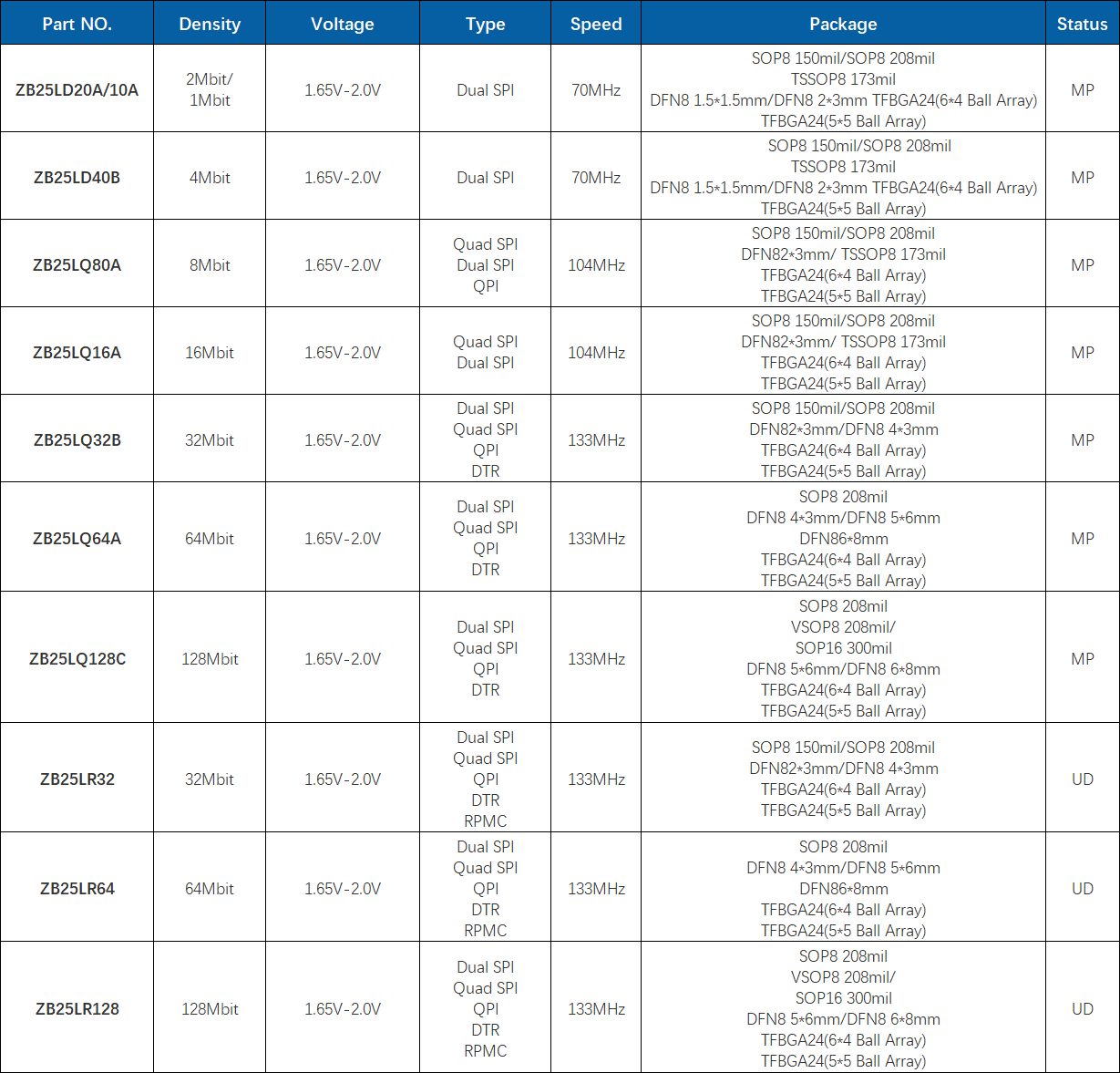SPI Flash is a type of non-volatile memory chip based on the Serial Peripheral Interface (SPI) protocol. It boasts numerous significant advantages, making it widely used in various electronic devices.
Key Advantages of SPI Flash
Compact Size: SPI Flash chips adopt advanced packaging technology, featuring a small form factor that effectively saves circuit board space, enabling the miniaturized design of products.
Cost-Effectiveness: Compared to other memory chips, SPI Flash has obvious advantages in terms of cost. Its simple interface design and highly integrated manufacturing process significantly reduce production costs.
High Read/Write Speed: SPI Flash meets the demand for high-speed read and write operations. It supports multiple high-speed communication modes such as Single/Dual/Quad SPI and QPI, ensuring fast data transmission rates. This capability significantly improves system operating efficiency and reduces data read/write latency.
Strong Durability: SPI Flash products undergo rigorous quality inspections and reliability tests, demonstrating excellent durability. They offer a long erase/write lifespan, capable of withstanding hundreds of thousands of erase/write cycles, and can retain data for up to 20 years. Even in harsh working environments, they ensure secure data storage and reliable read operations.
SPI Flash Product Series
Hengshuo Semiconductor provides Flash memory devices with universal SPI interfaces, offering a diverse range of product series to meet the varied needs of different customers.
1.8V Operating Voltage Series
The ZB25LD/ZB25LQ series operates at a 1.8V working voltage, making it suitable for application scenarios with extremely strict power consumption requirements. This series features an ultra-low static current of only 1μA and consumes almost no power in standby mode, providing strong support for long device battery life.

3.0V Operating Voltage Series
The ZB25VQ/ZB25D series operates at a 3.0V voltage, delivering high performance and stability. In industrial control fields with high performance requirements, this series can operate stably, ensuring fast and accurate data reading and writing. Its data transmission rate reaches a high level, meeting the strict requirements of industrial automation systems for data processing speed.

1.65V~3.6V Operating Voltage Series
The ZB25WD/ZB25WQ series supports a wide operating voltage range of 1.65V to 3.6V, offering stronger adaptability. In battery-powered terminal devices, voltage gradually decreases as battery power depletes. The wide-voltage SPI Flash can operate normally under varying voltage conditions, ensuring stable device operation. This wide-voltage feature plays a crucial role in both smart home devices and portable medical equipment.

Application Fields
Internet of Things (IoT) Devices: The rapid development of IoT has led to a large number of devices requiring network connectivity, data storage, and processing. Hengshuo Semiconductor's SPI Flash, with its low power consumption, small size, and high reliability, has become an ideal choice for storing firmware, configuration data, and sensor data in IoT devices.
Automotive Electronics: The automotive electronics field has extremely high requirements for the reliability and stability of memory chips. Hengshuo Semiconductor's SPI Flash can operate stably within a wide temperature range of -40℃ to 125℃, meeting the usage demands of automobiles in various complex environments.
Industrial Control: In the industrial control field, devices need to operate stably for long periods, requiring high reliability and data retention capabilities from memory chips. Hengshuo Semiconductor's SPI Flash offers advantages of high reliability and long data retention time, making it suitable for storing configuration data, firmware, and log data in industrial control systems.
Consumer Electronics: Hengshuo Semiconductor's SPI Flash is widely used in consumer electronics due to its excellent comprehensive performance. In smartphones, it stores system firmware and user data, with fast read/write speeds enhancing boot-up speed and application operation efficiency. In wearable devices, its small size and low power consumption meet the device's requirements for space and battery life.









